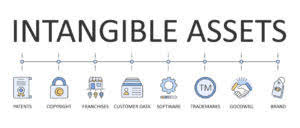
By building transparency and accountability into decision-making, the organization increased worker satisfaction and significantly improved its ability to get products and services to market. This study addresses gaps in the HE, WP, and evaluation literature by examining the complex interplay between national policy, organisational imperatives and staff values that influence WP-based evaluation practices and the influence of evaluation on decision-making within three diverse English HE Providers. First, literature examining the context of WP within English HE is provided, including how evaluation in WP has become systematised within national policy and regulation through principles of New Public Management. Then, a conceptual framework explores how job roles, responsibilities and values influence how staff in English HE providers practise and use evaluation to inform decision-making. Finally, the implications of this study are explored through a thematic analysis of interview data with 17 staff members spanning the organisational hierarchy of 3 diverse English HE Providers.

Why is Clarifying Decision Rights Crucial for Businesses?
- The findings identify implications for how HE providers can shape their evaluation systems, and how staff choose to enact evaluation within their programme areas.
- This is reflected in the target-driven approach to regulation through institutional access and participation plans (Crockford, 2020).
- This can contribute to the bureaucratic capture of evaluation within HE providers because data collection and analysis is more likely to support their views that their programmes are ‘impactful’, rather than providing opportunities to critically reflect on their practices (Clements, 2023).
- Once bosses and subordinates have built trusting relationships, they can discuss the ART of decision-making as a way to help each other and the organization as a whole so subordinates know when to ask for directions or help, recommend, tell in advance or after the fact.
- In this case, symbolic use occurs because the university and individual staff members tend to hold preconceptions of impact before evaluating their work.
For example, what might be a delegated decision for the enterprise as a whole could be a big-bet decision for an individual business unit. Regardless, any fundamental change in decision-making culture needs to involve the senior leaders in the organization or business unit. The top team will decide what decisions are big bets, where to appoint process leaders for cross-cutting decisions, and to whom to delegate. Senior executives also serve the critical functions of role-modeling a culture of collaboration and of making sure junior leaders take ownership of the delegated decisions. For many companies, the COVID-19 pandemic has accelerated digitization and digital transformation efforts. Empowered teams typically led the way forward, rapidly sensing and responding to changes in their environment.
- Our onboarding process now includes introducing the framework to new employees to help them understand how we work and what decisions they can make.
- According to some practitioners, evaluation within HE providers has helped to shift some attitudes about WP.
- The value at stake for delegated decisions is in the multiplier effect they can have because of the frequency of their occurrence across the organization.
- This theme was changed to a central organising concept, ‘making tweaks’, which centres on participants’ experiences of using evaluation findings symbolically or only making very small-scale changes to their programmes because they already perceive them to be impactful.
- But these perceptions are not always true, the Senior Policy Manager at the same Post-1992 University stated they are interested in “understanding the lived experience and wanting to gain that appreciation and understanding to find out more about what creates unequal outcomes and inequity”.
- Making decisions solely based on the hierarchical position of individuals may not always yield the best results.
- For example, other practitioners opt for theory-based and interpretive models for evaluation that focus on examining the lived experiences of communities and students (Austen, 2022; Clements & Short, 2020; Formby et al., 2020).
Findings

Mars’ enterprise architecture has become geared for speed as well, with modularized business, data, and infrastructure components supercharging the Digital Engine. This enables teams to rapidly (re)configure components for local solutions, while the Digital Technologies unit ensures security and compliance of the components via required processes and controls. In its policies, Digital Technologies takes the overall interdependence of teams’ initiatives into account, sacrificing speed of some individual teams for speed across the entire company. Clear decision rights allow companies to cut through the complexity often clouding today’s global structures by retained earnings ensuring that critical decisions are made promptly and well and result in effective actions. Misunderstandings about which individuals or groups have the right to make which decisions frequently carries a high cost for the organization, Jensen notes, whether through duplicated or counterproductive efforts, or through the failure of the parties to act.
What are decision rights tools?

Teasdale et al., https://www.bookstime.com/ (2023) define values underpinning evaluators‘ perception of equity and justice as ‘values related to social betterment’. In their study, values related to social betterment address evaluators‘ beliefs about the broader purpose of evaluation in society. This is because WP is rooted in a variety of social values including increasing social mobility, and social justice. Instead of pulling back decision power after a slipup, hold people accountable for the decision, and coach them to avoid repeating the misstep. Similarly, in all but the rarest of cases, leaders should resist weighing in on a decision kicked up to them during a logjam. From the start, senior leaders should collectively agree on escalation protocols and stick with them to create consistency throughout the organization.
- But these external pressures also conflict with the social equity values of administrators, practitioners and evaluators and their ability to fulfil their more operational job roles.
- In organizations where people do not believe that formal accountability can emerge from a defined process or venue, it can be difficult to hold anyone accountable for decisions, let alone senior leadership.
- However, leaders quickly found that the changed structure alone was not yielding the hoped-for benefits.
- But the time needed to transfer the relevant information to headquarters, and for executives there to absorb and react to it, reduced the company’s ability to respond to bid requests on a timely basis.
- In their study, values related to social betterment address evaluators‘ beliefs about the broader purpose of evaluation in society.
He and the Insights2Action team help clients to sense, analyze, and act—with purpose and precision—at the ever shifting intersection of work, workforce, workplace, and industry. He brings more than 20 years of experience in human capital and is a sought-after researcher, thought leader, and speaker on organization design, organizational culture, HR, talent, learning, and performance. David is an author of Deloitte’s annual Global Human Capital Trends study and a co-host of the Capital H podcast. That said, while giving frontline workers more decision-making authority can increase adaptability, it can also create confusion if accountabilities are not clearly defined and communicated. Just as with decision rights among management, it’s therefore important to explicitly articulate which frontline workers have the authority to make which decisions under what circumstances. Some important enterprise-level decisions must rest with C-suite executives or others in top management positions.

Likewise, Dahler-Larsen (2012) refers to the constitutive effects of systematised evaluation practices. Constitutive effects occur when evaluation systems define and shape organisational practices including the programmes being evaluated. In WP, constitutive effects are also present when HE providers design activities so they can implement a randomised control trial to evaluate them, rather than defining the evaluation method around the activity (Clements, 2023). In these cases, evaluation can be used as a performative tool to create an illusion of rigour, rather than supporting the critical reflection of WP practice that can help instigate transformative change (Clements, 2023; Greene, 2015). These practices can produce a symbolic and legitimising effect of evaluation (Raimondo, 2018). Combined, these capabilities constitute the Mars Digital Engine—a three-step process that empowers teams through guardrails that bring decision making and initiative execution closer to the customer.
Conceptual framework: the role of values in evaluation systems
Most businesses rely on traditional capital-budgeting tools when making strategic decisions such as investing in an innovative technology or entering a new market. These tools assume that decision makers have decision making framework access to remarkably complete and reliable information—yet most strategic decisions must be made under conditions of great uncertainty. David, a vice president with Deloitte Consulting LLP, is Chief Analyst and market leader for Deloitte’s Insights2Action team.
